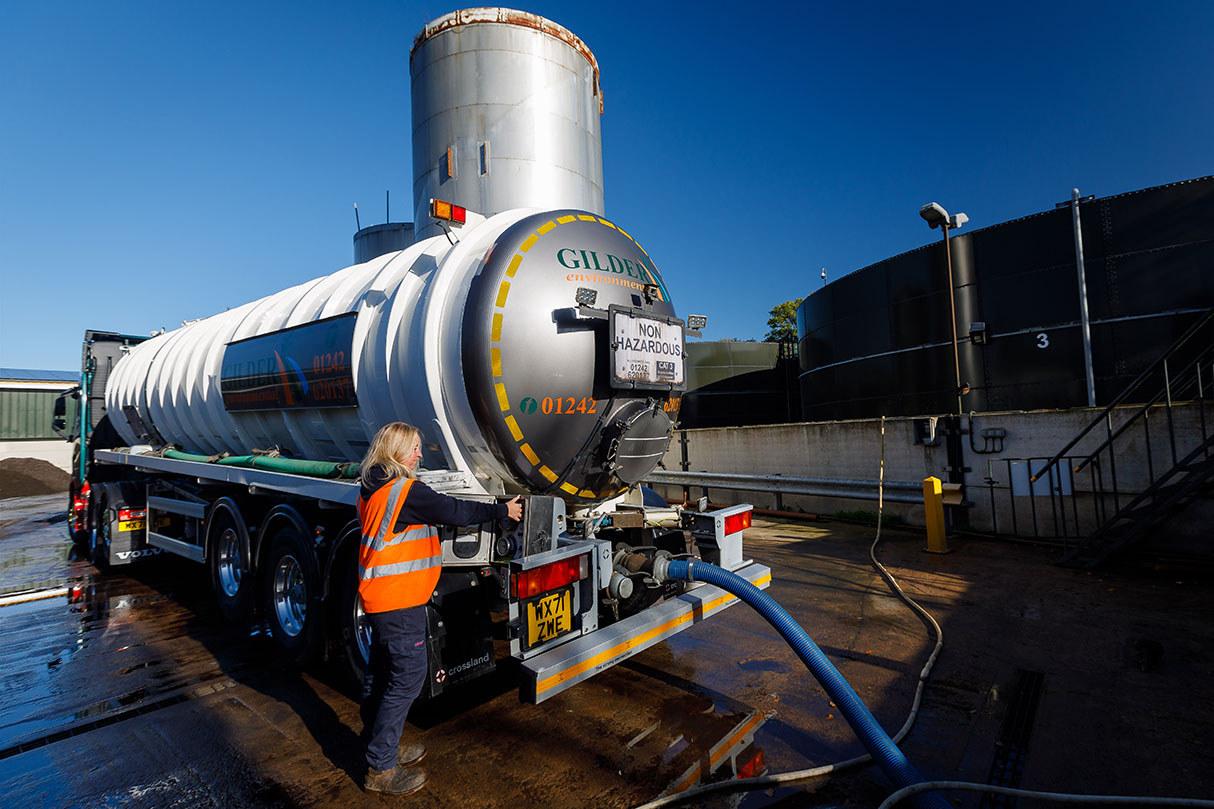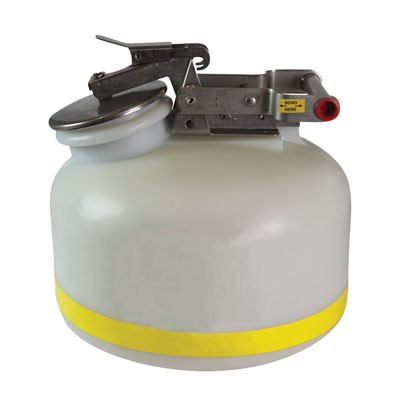Cutting-edge Industrial Wastewater Treatment Solutions: Shielding the Setting
Understanding the Comprehensive Refine of Fluid Waste Disposal: Best Practices and Environmental Impact Factors To Consider
The management of liquid waste disposal is a complex issue that requires a detailed understanding of numerous ideal practices and their linked ecological influences. From the sorts of liquid waste produced to the approaches employed for collection, therapy, and last disposal, each action plays a crucial role in safeguarding environments and public health and wellness. As regulative standards develop and technology advances, the discussion around these processes becomes increasingly relevant. What implications do these modifications hold for future sustainability efforts, and how can stakeholders make certain that they are effectively attended to?
Kinds Of Liquid Waste
Understanding the various types of fluid waste is essential for effective management and disposal methods. Liquid waste can be extensively categorized into a number of kinds, each needing one-of-a-kind handling and treatment techniques.
Industrial liquid waste commonly includes hazardous products, consisting of heavy steels, solvents, and chemicals, generated throughout manufacturing processes. These wastes require rigorous governing conformity to shield human health and wellness and the atmosphere. Residential liquid waste mostly describes wastewater generated from families, consisting of sewer and greywater, which, although much less harmful, can still posture significant risks if improperly handled.
Agricultural fluid waste, including runoff from farms, usually has fertilizers and pesticides that can lead to environmental degradation if not treated sufficiently. Clinical liquid waste, generated from health care facilities, consists of polluted fluids such as bodily fluids and chemicals, needing specialized disposal techniques to stop infection and ecological contamination.
Last but not least, oil and grease waste, generally produced by restaurants and auto markets, can create extreme clogs in sewage system systems otherwise managed correctly. Comprehending these groups facilitates targeted approaches for therapy, compliance with policies, and reliable disposal methods, inevitably advertising ecological sustainability and public wellness safety and security.

Collection Methods
Reliable collection techniques are essential for the correct administration of fluid waste, making certain that it is collected safely and successfully before therapy or disposal. Various techniques are used depending upon the sort of liquid waste produced, the volume, and the particular characteristics of the waste.
One common approach is the use of committed collection containers or sumps, which are designed to record fluid waste at the source. These systems commonly integrate pumps that promote the transfer of waste to larger storage space containers or therapy facilities. In addition, mobile collection units outfitted with vacuum modern technology are employed in circumstances where waste is created intermittently or in hard-to-reach places.
For industrial settings, closed-loop systems can properly reduce leakages and spills, permitting for the healing and reuse of fluid waste. It is additionally vital to train workers on correct collection protocols to mitigate dangers linked with hazardous compounds.
In addition, carrying out normal upkeep schedules for collection equipment makes certain optimal performance and security. The assimilation of innovative tracking systems can improve collection performance by giving real-time data on waste degrees and potential hazards. Generally, effective collection approaches are fundamental to lasting liquid waste management techniques.
Therapy Procedures
Therapy procedures play a vital role in the management of liquid waste, transforming potentially dangerous materials into safe effluents or recyclable sources - liquid waste disposal. These processes can be extensively classified into physical, chemical, and biological methods, each tailored to deal with particular contaminants present in the waste stream
Physical therapy approaches, such as sedimentation and purification, work by eliminating suspended solids and particulate matter. These methods are commonly the primary step in the therapy chain, successfully minimizing the tons on subsequent processes. Chemical therapies involve making use of reagents to neutralize damaging compounds, precipitate heavy metals, or oxidize organic toxins, thus improving the safety of the effluent.
Organic therapy processes, including activated sludge systems and anaerobic food digestion, take advantage of the natural abilities of microbes to deteriorate raw material. These approaches are especially reliable for wastewater having eco-friendly pollutants. Advanced therapy modern technologies, such as membrane purification and advanced oxidation processes, are progressively used to achieve higher degrees of filtration.
Incorporating a combination of these therapy approaches not only guarantees compliance with regulative criteria but likewise advertises environmental sustainability by recuperating beneficial resources from liquid waste.
Disposal Options
Exactly how can organizations guarantee the liable and safe disposal of liquid waste? Effective disposal choices are crucial for protecting public wellness and the environment. The primary methods include land treatment, incineration, and disposal adhered to by discharge right into metropolitan wastewater systems.
Land disposal involves the careful control of fluid waste in marked land fills, ensuring that it does not leach into bordering dirt or water. Incineration, on the various other see post hand, subjects liquid waste to high temperature levels, transforming it right into ash and gases, which call for correct filtration to lessen exhausts. This technique appropriates for harmful wastes that can not be dealt with via typical methods.
In situations where liquid waste can be treated, companies might opt for organic or chemical treatment processes to neutralize damaging components prior to releasing the treated effluent into municipal systems. This course generally straightens with regulative demands, making sure that the effluent satisfies security requirements.
Eventually, companies should conduct thorough analyses of each disposal alternative to establish its feasibility, thinking about factors such as waste make-up, governing compliance, and possible dangers to health and the setting. By choosing appropriate disposal approaches, companies can add to a responsible waste monitoring technique.
Ecological Effect
The environmental impact of fluid waste disposal is a critical factor to consider for organizations seeking to lessen their ecological impact. Inappropriate disposal techniques can result in substantial contamination of water sources, dirt destruction, and adverse impacts on neighborhood environments. As an example, harmful liquids can seep right into groundwater, posing dangers to drinking water products and marine life. Furthermore, the discharge of unattended or inadequately dealt with waste right into surface waters can result in eutrophication, bring about oxygen depletion and the subsequent death of fish and various other organisms.

To minimize these effects, companies need to embrace finest methods such as implementing rigorous waste therapy procedures, promoting recycling and reuse, and adhering to regulatory standards. check here By taking a positive method to liquid waste monitoring, entities can considerably reduce their ecological impact while supporting sustainable advancement objectives. Inevitably, a detailed understanding of the environmental impacts linked with liquid waste disposal is essential for informed decision-making and liable go now stewardship of all-natural resources.
Verdict
Efficient administration of fluid waste is vital for securing environmental honesty and public health and wellness. By taking on finest practices in collection, disposal, and treatment, alongside adherence to regulative criteria, the possibility for damaging contamination of communities can be dramatically minimized. Constant developments in modern technology and processes add to sustainable waste monitoring efforts. Inevitably, a detailed understanding of fluid waste disposal not only minimizes environmental influences but likewise fosters a dedication to liable resource management and ecological stewardship.
The management of liquid waste disposal is a diverse problem that needs a thorough understanding of different best techniques and their linked environmental effects. From the kinds of fluid waste generated to the methods employed for collection, treatment, and final disposal, each action plays a crucial function in securing ecological communities and public wellness.The environmental effect of liquid waste disposal is an important factor to consider for organizations looking for to minimize their environmental impact. Eventually, a detailed understanding of the ecological influences linked with fluid waste disposal is necessary for educated decision-making and liable stewardship of all-natural sources.
Eventually, a detailed understanding of liquid waste disposal not only minimizes environmental impacts but additionally cultivates a commitment to responsible source monitoring and environmental stewardship.